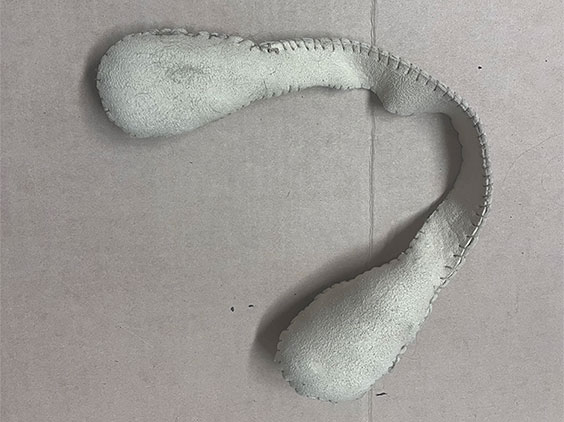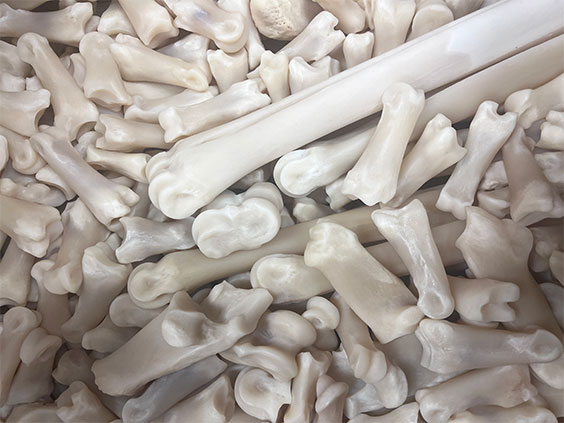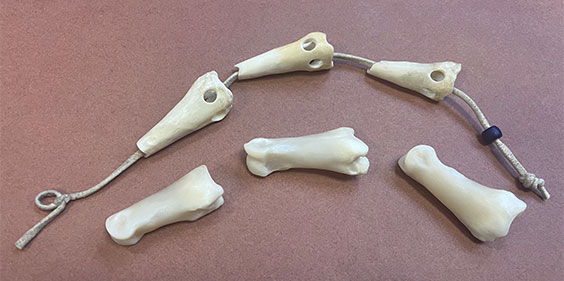If I had a nickel for every time I called and asked for local businesses’ “garbage,” well, I’d only have 10 cents. But strangely, that’s already happened twice.
I work as the education outreach supervisor, and much of my role involves developing programs that help visitors connect with and better understand the history of North Dakota. One program I lead is called “Native American Sports and Games,” where we share activities that have been played for hundreds of years by the Indigenous people of the Great Plains. Some of these games include lacrosse, double ball, ice gliders, hand game, and bone and pin. This program has become quite popular with visiting school groups, and the items in our games bin see a lot of wear and tear. Because of this, I occasionally need to repair or replace our equipment. While there are plenty of outlet stores and online retailers that sell similar items, I have a crafty heart and a bit too much confidence in my ability to DIY just about anything. Rather than buying new gear, I sometimes try making it myself.
The first item I decided to make was a double ball. Fortunately, I had most of the supplies on hand. The materials I needed were simple: buckskin leather, sinew, and bison hair. I had a few pieces of buckskin left over from a previous project, and a large roll of imitation sinew. But I didn’t have any bison hair—and alas, no bison to groom! That halted the project for a moment, but then I realized that bison hair was likely chosen for its abundance and convenience. So I started thinking: What other natural fiber could I easily get my hands on? Dog hair! A quick phone call to a local pet groomer, and I asked if I could have their end-of-day garbage bag filled with dog hair. They found the request a bit odd but were happy to oblige. And just like that, the project resumed. With all the materials in place, I was able to successfully make an additional double ball for the program.

Completed double ball made of buckskin, imitation sinew, and dog hair clippings.
This fall, I took on a second DIY project: bone and pin. To make this game, you need deer phalanges (toe bones), long bone or antler, leather cord, and another piece of buckskin. I already had the leather supplies on hand, but despite my best efforts, I couldn’t find reasonably priced deer phalanges anywhere. Luckily, fall in North Dakota means one thing: hunting season.
I called up my local butcher and asked if I could have the phalanges from any deer being processed. He couldn’t clean out just the phalanges but could give me the entire lower leg portion. I was thrilled and happily agreed. A few weeks after deer opener, I picked up a box of 44 deer legs from the butcher and brought them to work. With the help of Becky Barnes, a paleontologist with the North Dakota Geological Survey, I learned the process for removing and cleaning bones from the hooves. I will save you the gory details but will say I became adept at removing the flesh and tendon from bone. We washed the bones in a soap water solution and left them to soak in ammonia to remove any remaining oils. After soaking for a few months, the bones were clean and ready to be shaped.

Cleaned lower leg and hoof bones from deer.
I plan to shape them using drills and sanding belts. Finally, I’ll string the pieces together to complete the game set.

Bones shaped for bone and pin strung together on leather alongside unshaped phalange bones.
I’m grateful for these unusual opportunities because they not only connect me to our history but also to my community. In the end, I’m proud to say that both these DIY projects seem to be on a successful track. And as a bonus, I was able to repurpose what would have otherwise been waste from local businesses into meaningful educational items.

